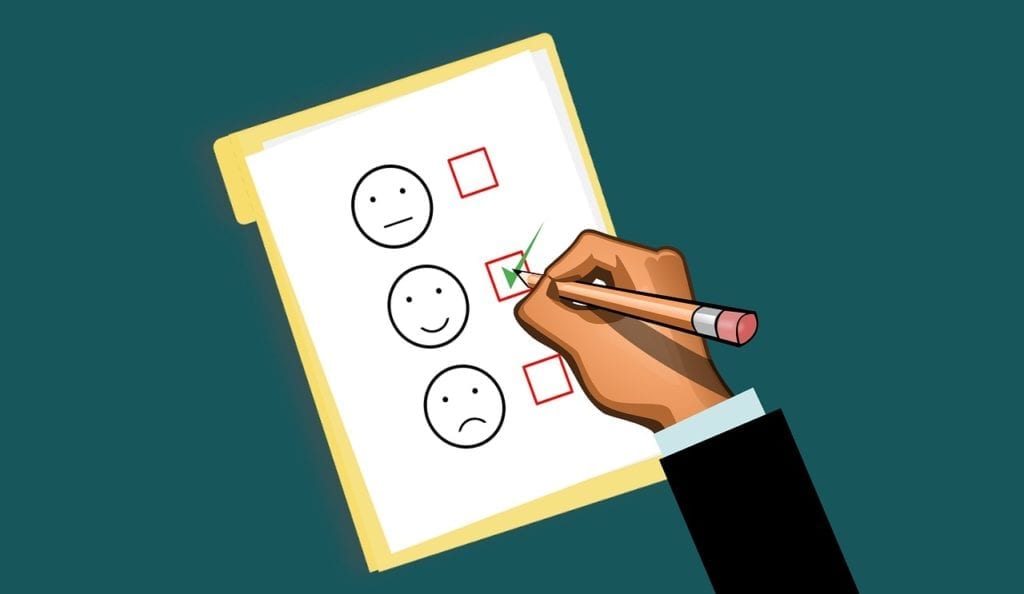Buyer personas are critical to any organization. Studies show that when you take the time to create detailed descriptions of your ideal customers, it can lead to more conversions and a vastly improved bottom line.
Just look at these compelling statistics:
While it’s clear that detailed, accurate buyer personas can lead to more revenue, many companies keep their teams in silos, which eliminates any collaboration when creating buyer personas.
When an Econsultancy study asked workers if they felt their customer experience objectives were supported by members of other departments, 40% said they believed other departments all had their own agenda.
This is all too true when it comes to marketing, customer service and sales teams. Each department has its own set of goals to reach, and, within many organizations, the different teams rarely, if ever, communicate.
According to Accenture, 77% of buyers think that salespeople don’t understand them or their business. Bridging that gap could make a significant difference in the overall success of the company.
When sales and customer service departments work together with the marketing department to develop buyer personas, they can help draw a clearer picture of who their customers are. This, in turn, allows them to target customers more accurately and demonstrate that they understand their customers’ needs. With better alignment, these three teams can produce buyer personas that are going to be much more effective and lead to improved results.
Here a few specific reasons that sales, customer service marketing need to create buyer personas as a team.
When marketers create buyer personas, they’re basing them on data - but data can only take them so far. Data isn’t nuanced and can’t always reveal specifically who customers are. Sometimes, it takes a bit of communication to determine who the customers are in real life and not just on paper.
Marketers rarely, if ever, interact with prospects and customers, while salespeople and customer service representatives talk to them every single day. With some insight from sales and customer service, marketers can take the basic demographic information about their customers to a whole new level and identify who they’re targeting.
Since salespeople and customer service reps are in constant contact with prospects and customers, they hear customers’ questions and concerns and speak to them about what matters most. With that kind of information, sales and customer service agents can instruct marketers on what pain points to include in buyer personas and the kinds of solutions they should communicate to customers.
From the buyer personas, marketers will create content, so the more accurate and detailed those pain points are, the better. For example, if a customer tells a sales or customer service person, “I’m not sure how to install the software,” that employee can pass that onto their marketing teams, who can update the appropriate persona and create personalized content around how to install the software. Now marketers are legitimately helping customers and everyone — sales, marketing, customer service and the company as a whole — will benefit from informed, satisfied customers.

Whether salespeople and customer service reps are emailing, communicating with customers on chatbots, sending them texts or talking to them on the phone, they know their customers’ communication preferences.
[bctt tweet="How customers want to communicate is a critical piece of the buyer persona puzzle." username="relevance"]
Salespeople and customer service reps can tell marketers what kind of communication customers want (email, text, phone, chatbot, etc.), how often they want it, how short they want conversations to be and more. When marketers look at the personas, they can determine the most effective ways to interact with customers from a marketing perspective.
Perhaps a persona like “Businessman Bob” is old school and likes to read in-depth white papers, while “Millennial Mitchell” prefers to receive short and snappy emails. Once marketers figure out the way customers want to communicate, they’ll be more likely to help salespeople convert.
Salespeople and customer service reps are excellent communicators. They get to know prospects and customers and make them feel comfortable. When writing buyer personas, it helps to include a few quotes from actual customers. Salespeople and customer service reps can interview select customers to get real (and helpful) insight that marketers can include when creating personas.
A buyer persona should include information about customers’ personalities. For instance, are they introverted or extroverted? Do they use their senses or intuition to make decisions? Are they thinkers or feelers? Do they tend to perceive or judge? Using day-to-day interactions, as well as customer surveys, salespeople and customer service reps can answer these questions for marketers to include in the personas.
Marketers will know what kind of message to create based on which persona they’re targeting. For example, “Inbound Ingrid” may be a self-starter who prefers not to be hard-sold on anything. Instead of getting multiple phone calls from salespeople, she enjoys reading e-books and blog posts to make up her mind.
Knowing this, marketers could create content for “Inbound Ingrid” that is informative and will help her make a decision, then deliver that content in a weekly email. They know Ingrid is going to read it, since she’s a self-starter, so they don’t have to send follow-up emails each week reminding her to check out the content.
When marketers, customer service reps and salespeople alignment on buyer personas, the ensure that they are respecting prospects’ and customers’ personality preferences.

Buyer Personas
In fact, companies with tightly aligned sales and marketing functions have 36% higher customer retention rates as well as 38% higher sales win rates.
When creating buyer personas together, marketing, salespeople and customer service reps can use templates (HubSpot is known for their great templates), and then work to ensure that all the necessary information is there. With some collaboration, they can not just improve communication and understanding within the company, but can satisfy customers and increase sales at the same time.